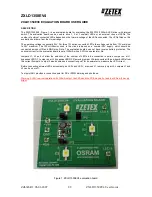
Index 5
Disk drives, installing, 3-8
Expansion board, installing, 3-11
Features, 3-3
Hard disk drive cage, 3-13
Housing panels, opening, 3-6
Standalone system, 3-2
System information, 2-3
Bus frequency, 2-5, 2-35
External cache, 2-5
Floppy drive A, 2-5
Floppy drive B, 2-5
IDE primary channel master, 2-6
IDE primary channel slave, 2-6
IDE secondary channel master, 2-6
IDE secondary channel slave, 2-6
Internal cache, 2-5, 2-33
Memory parity mode, 2-7
Onboard USB, 2-7
Parallel port, 2-7, 2-25
Pointing device, 2-7
Processor, 2-4
Processor speed, 2-5, 2-35
Serial port 1, 2-7, 2-23
Serial port 2, 2-7, 2-24
Total memory, 2-6
System S/N, 2-8
System security setup, 2-39
Disk drive control, 2-40
Password, power-on, 2-43
Password, setup, 2-41
T
Time, 2-45
Total memory, 2-6
W
Wakeup event, 2-17
Modem ring, 2-17
































